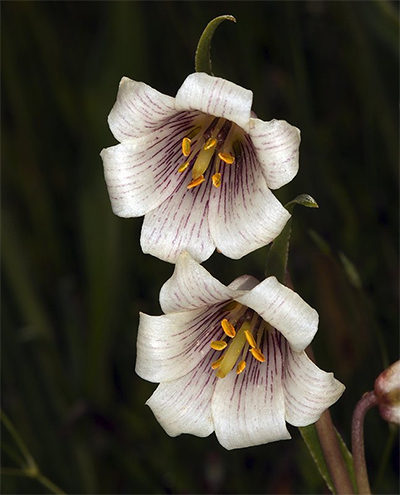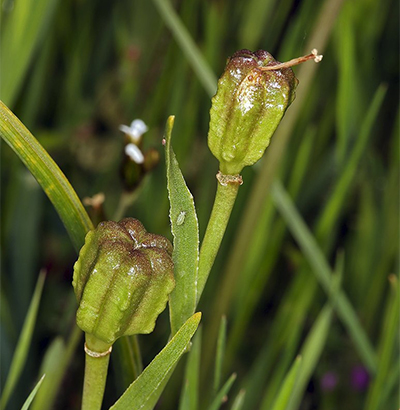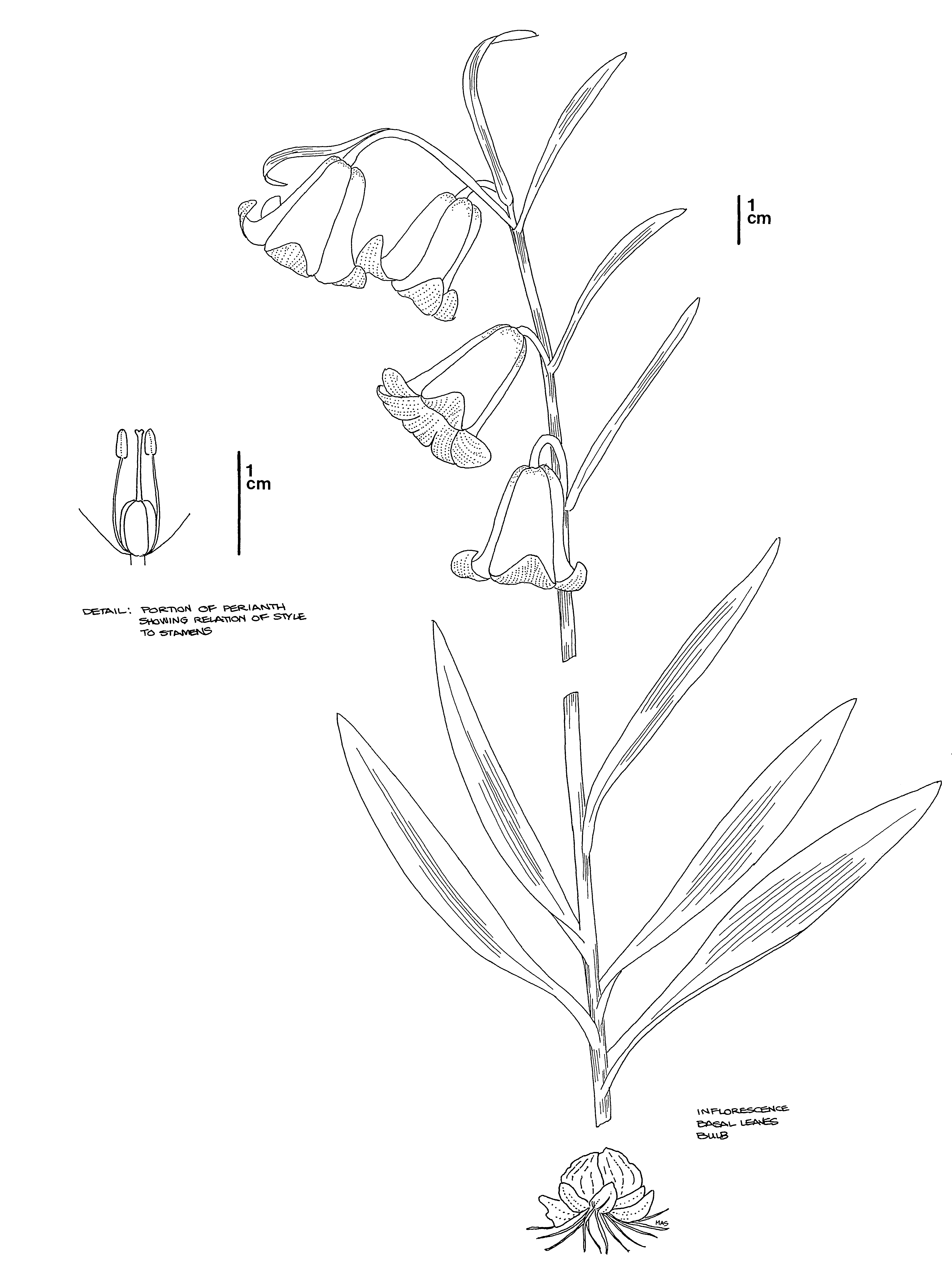(Fritillaria striata)
| Family |
Liliaceae (Lilies) |
| Life History |
Perennial |
| Listing |
California Threatened |
| Range |
Tulare and Kern Counties |
| CDFW Region |
Central (Region 4) |
Background
 CC photo by Steve Matson.
CC photo by Steve Matson.
 CC photo by Steve Matson.
CC photo by Steve Matson.
 Fritillaria striata. CDFW illustration by Mary Ann Showers. (Click to enlarge)
Fritillaria striata. CDFW illustration by Mary Ann Showers. (Click to enlarge)
Striped adobe lily (Fritillaria striata) is a California threatened plant species, which means that killing or possessing the plant is prohibited by the California Endangered Species Act (CESA). Striped adobe lily is a perennial plant in the lily family (Liliaceae), restricted to heavy clay (adobe) soils in grasslands and blue oak woodlands. Striped adobe lily typically blooms between mid-February and early April, depending on rainfall. Flowering stems are 25 to 38 cm long with one to many fragrant nodding flowers. Flowers are pink or white, with six 2- to 3-cm long tepals (undifferentiated sepals and petals) and red striations. The tip of the style is sometimes slightly parted, which distinguishes this species from other Fritillaria species nearby which have styles that are conspicuously branched. Striped adobe lily grows in the largest numbers in areas with deep clay and relatively high soil moisture.
Distribution
Striped adobe lily occurs in the foothills of the Sierra Nevada and Tehachapi Mountains in central Tulare and Kern counties. Most of the current populations are in Kern County's Greenhorn Mountains in the southern Sierra Nevada. The California Natural Diversity Database lists 20 presumed extant populations, and three extirpated due to land conversion into agriculture. The largest population reported was 100,000 individuals and the smallest was two individuals. Most sites have not been surveyed for several decades. One population is on protected land in the Sequoia River Land Trust's Lewis Hill Preserve, and all others are on private land. Striped adobe lily sometimes co-occurs with the federally- and state-listed San Joaquin adobe sunburst (Pseudobahia peirsonii) in both Tulare and Kern counties.
Conservation
Threats to striped adobe lily include land conversion, livestock grazing during flowering periods, herbivory by deer and ground squirrels, and road construction. Some grazing can benefit the plant by reducing pressure from invasive grasses such as Avena and Bromus, but cattle may damage the flowers before they set seed, interfering with their reproduction. Climate change will likely also impact the species, as changing rain patterns affect the timing of flowering and whether or not plants reproduce in a given year, and the striped adobe lily's restrictive habitat limitations may render it unable to migrate. The species would benefit from conservation easements to protect populations on private land, thoughtfully planned grazing regimes, and more surveys to understand the current state of the species.
CDFW may issue permits for striped adobe lily pursuant to CESA, and we invite you to learn more about the California laws protecting striped adobe lily and other California native plants. Populations of striped adobe lily occur in CDFW's Central Region.
Further Reading
Updated 10/08/2025